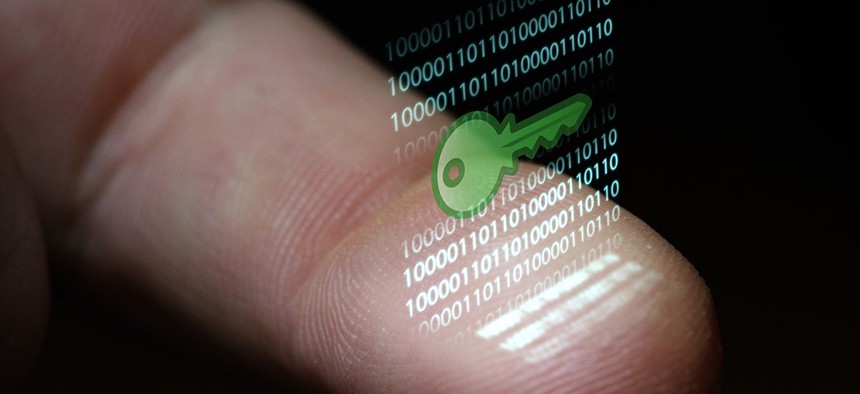How Customers Are Defining the Future of Biometrics

HQuality/Shutterstock.com
As organizations try to move beyond passwords, the government will need to ensure biometric systems are ethical and secure.
J. Kevin Reid is the vice president of national security and chief information officer of KeyLogic Systems.
In the past, biometric security was something many only saw in spy movies or a futuristic utopia. However, as organizations more consistently look at the potential of biometric tools, they increasingly become a modern-day reality.
With individuals across every generation identifying a need for security solutions that go beyond password-based systems on their personal devices, commercial organizations are being incentivized to create products with biometric capabilities, whether it’s a fingerprint scanner to open your iPhone or facial recognition to enter an apartment building.
» Get the best federal technology news and ideas delivered right to your inbox. Sign up here.
While this growing trend is important for consumers and commercial businesses, it will ultimately depend on the federal government to ensure these systems are ethical and secure. The Homeland Security Department is even looking into hiring a communications team for their Office of Biometric Identity Management, to avoid any biometric-related PR disasters. Just one example of how closely citizens tie biometrics with the government.
Big Brother or Watchful Neighbor?
Earlier this year, with legislators debating the ethics behind the FBI’s facial recognition database, many began to realize the sensitive nature of biometric security and privacy, as well as the ranging support and concern surrounding this technology. A large part of the overall concern was in the way the FBI aggregates its data.
The Government Accountability Office determined in a May 2016 report the FBI needed to be doing more to ensure the privacy and accuracy of their data. In its database, the FBI has access to approximately 30 million photos to support criminal investigations from 18 different states. It was GAO’s belief the FBI was not doing enough to protect this information.
However, facial data paired with fingerprint has been searched and collected for decades via mugshots. Only a subset of these mugshots on file are being uploaded into the FBI’s facial recognition system because the quality of older photos is not effective in identification. The FBI is using this data primarily for investigative leads not to actually identify an individual, the main source of concern with the general public.
Regardless of the number of biometric data points the U.S. government has on file, there are various viewpoints on how exactly we should go about securing it, and the ethics of biometric are sure to remain a highly debated topic as our world becomes increasingly connected and data-driven.
The Future of Biometrics
Though some are skeptical, there is a great deal of good biometric data can do for the United States.
The Intelligence Advanced Research Projects Activity’s Odin”project, which was unveiled last month, has awarded funds to various organizations who agree on the positive impact biometrics can have. These groups are dedicated to improving and mitigating potential fraud found in iris, face and fingerprint scanning.
The improved biometric technology we will have through the Odin project and others like it, will not only make the U.S. a more technologically savvy and competitive nation, but also a more secure one.
Recently, the State Department put out a request for information for a scalable, deployable biometric system solution that could work in junction between the already existing biometric systems at a variety of U.S. and Mexican agencies. This RFI is part of the Mérida Initiative, a bilateral partnership that was launched in 2007 during the Bush administration.
The FBI is also actively working to improve its biometric technology capabilities. Last year, it certified MorphoWave’s desktop contactless fingerprint scanner, which can simultaneously acquire four fingerprints in less than 1 second with a simple wave of the hand. The MorphoWave desktop is especially useful in high-traffic environments, such as border control at international entry or exit ports and access control at public and private facilities.
In what may be one of the dwindling number of bipartisan efforts left in Congress, I am happy to see our nation working collaboratively with public and private organizations to find secure and advanced solutions to our most pressing security issues.
NEXT STORY: MGT Act Looks Promising But...


